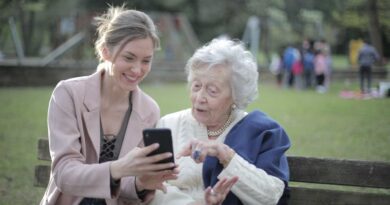You Might be able to Avoid Diabetes
Vecinos: information and advice for our American communities
by Ellen Lee Alderton
 November is Diabetes Awareness Month and, chances are, you know someone who has this disease. Diabetes poses an enormous health problem in the Latino/Hispanic community. In the United States, approximately one out of ten Latinos age 20 or older is diagnosed with diabetes. And many people may have the disease without realizing it.
November is Diabetes Awareness Month and, chances are, you know someone who has this disease. Diabetes poses an enormous health problem in the Latino/Hispanic community. In the United States, approximately one out of ten Latinos age 20 or older is diagnosed with diabetes. And many people may have the disease without realizing it.
There are two types of diabetes, Type 1 and Type 2. Type 1 diabetes usually develops in childhood and results when the body attacks its own insulin-producing cells. Insulin is the substance the body uses to take up glucose (a simple sugar) from the blood. People with Type 1 diabetes require insulin shots in order to remain healthy.
Type 2 diabetes, the most common form of the disease, usually develops later in life. With Type 2 diabetes, either the body does not produce enough insulin, or the body does not use insulin as well as it should in order to take up glucose from the blood. As a result, glucose builds up in the blood and can cause different problems over time including damage to the eyes, kidneys, nerves, or heart. Type 2 diabetes is treated primarily through exercise, strict diet, and also with medication.
According to the Latino Diabetes Association (LDA) (http://lda.org), you should visit your doctor to be tested for diabetes if you have any of the following symptoms: frequent urination, unexplained weight loss, sudden vision changes, feeling fatigued much of the time, sores that are slow to heal, excessive thirst, extreme hunger, tingling or numbness in the hands or feet, very dry skin, or more infections than usual.
The good news about Type 2 diabetes is that it can, to a great extent, be prevented. The National Institutes of Health have found that people at risk for Type 2 diabetes can lower their chances of developing the disease by:
- Losing weight. (A person who weighs 200 pounds, for example, can lower his risk by taking off as little as 10 to 14 pounds.)
- Taking part in physical activity for 30 minutes per day, five days per week. A brisk walk can suffice.
- Making healthier food choices that limit the number of calories and amount of fat in one’s diet.
LDA emphasizes, “You’ve heard it countless times before – eat healthy.” At the same time, it is not always clear what “eating healthy” means. The organization provides some very simple guidelines for people wishing to improve their diet and lower their risk for developing Type 2 diabetes:
- Eat a variety of fruits and vegetables, and avoid salty, fat-filled snacks.
- Drink water instead of sodas or fruit drinks.
- Try grilled or baked foods instead of fried foods.
- If you experience a craving for sweets, snack on a piece of fruit instead of a dessert.
If you would like to learn more about diabetes, the Centers for Disease Control and Prevention staffs a bilingual informational help-line at (800) 232-4636.
Ellen Lee Alderton is the Director of Education for La Mano Amiga, a national nonprofit organization dedicated to providing informational resources to U.S. Latino communities.
